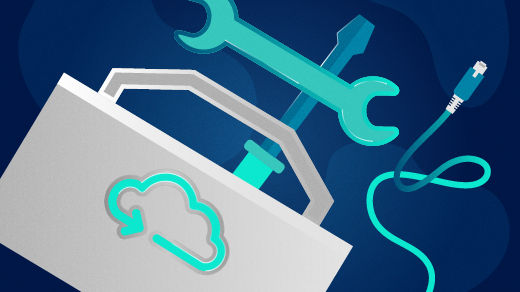I've had several opportunities to do IT work in less-developed and remote areas, where internet coverage and technology access aren't at the high level we have in our first-world cities. Many people heading off to undeveloped areas ask me for advice on preparing for the local technology landscape. Since conditions vary greatly around this big world, it's impossible to give specific advice for most areas, but I do have some general suggestions based on my experience that may help you.
Also, before you leave home, do as much research as you can about the general IT and telecom environment where you are traveling so you're a little better prepared for what you may encounter there.
Planning for the local hardware and infrastructure
- Even in many cities, internet connections tend to be expensive, slow, and not reliable for large downloads. Don't forget that internet coverage, speeds, and cost in cities are unlikely to be matched in more remote areas.
- The electricity supply may be unreliable with inconsistent voltage. If you are taking your computer, bring some surge protection—although in my experience, the electricity voltage is more likely to drop than to spike.
- It is always useful to have a small selection of hand tools, such as screwdrivers and needle-nose pliers, for repairing computer hardware. A lack of spare parts can limit opportunities for much beyond basic troubleshooting, although stripping usable components from dead computers can be worthwhile.
Planning for the software you'll find
- You can assume that most of the computer systems you'll find will be some incarnation of Microsoft Windows. You can expect that many will not be officially licensed, not be getting updates nor security patches, and are infected by multiple viruses and other malware.
- You can also expect that most application software will be proprietary and much of it will be unlicensed and lag behind the latest release versions. These conditions are depressing for open source enthusiasts, but this is the world as it is, rather than the world we would like it to be.
- It is wise to view any Windows system you do not control as potentially infected with viruses and malware. It's good practice to reserve a USB thumb drive for files you'll use with these Windows systems; this means that if (or more likely when) that thumb drive becomes infected, you can just reformat it at no cost.
- Bring copies of free antivirus software such as AVG and Avast, including recent virus definition files for them, as well as virus removal and repair tools such as Sophos and Hirens Boot CD.
- Trying to keep software current on machines that have no or infrequent access to the internet is a challenge. This is particularly true with web browsers, which tend to go through rapid release cycles. My preferred web browser is Mozilla Firefox and having a copy of the latest release is useful.
- Bring repair discs for a selection of recent Microsoft operating systems, and make sure that includes service packs for Windows and Microsoft Office.
Planning for the software you'll bring
There's no better way to convey the advantages of open source software than by showing it to people. Here are some recommendations along that line.
- When gathering software to take with you, make sure you get the full offline installation option. Often, the most prominently displayed download links on websites are stubs that require internet access to download the components. They won't work if you're in an area with poor (or no) internet service.
- Also, make sure to get the 32-bit and 64-bit versions of the software. While 32-bit machines are becoming less common, you may encounter them and it's best to be prepared.
- Having a bootable version of Linux is vital for two reasons. First, it can be used to rescue data from a seriously damaged Windows machine. Second, it's an easy way to show off Linux without installing it on someone's machine. Linux Mint is my favorite distro for this purpose, because the graphical interface (GUI) is similar enough to Windows to appear non-threatening and it includes a good range of application software.
- Bring the widest selection of open source applications you can—you can't count on being able to download something from the internet.
- When possible, bring your open source software library as portable applications that will run without installing them. One of the many ways to mess up those Windows machines is to install and uninstall a lot of software, and using portable apps gets around this problem. Many open source applications, including Libre Office, GIMP, Blender, and Inkscape, have portable app versions for Windows.
- It's smart to bring a supply of blank disks so you can give away copies of your open source software stash on media that is a bit more secure than a USB thumb drive.
- Don't forget to bring programs and resources related to projects you will be working on. (For example, most of my overseas work involves tuition, mentoring, and skills transfer, so I usually add a selection of open source software tools for creating learning resources.)
Your turn
There are many variables and surprises when doing IT work in undeveloped areas. If you have suggestions—for programs I've missed or tips that I didn't cover—please share them in the comments.




6 Comments